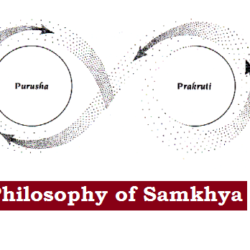
Girls’ education is a strategic development priority. It is an important tool that enables women and girls to participate in decisions that affect their lives and in improving their social status. Girls’ education goes beyond getting girls into school. It is also about ensuring that girls learn and feel safe while in school; complete all levels of education with the skills to effectively compete in the labor market; learn the socio-emotional and life skills necessary to navigate and adapt to a changing world; make decisions about their own lives; and contribute to their communities and the world.
A study by the International Centre for Research on Women has found that girls out of school are 3.4 times more likely to be married or have their marriage already fixed than girls who are still in school.
| Table of contents |
| 1. Female Literacy 2. Barriers to Girls’ Education 3. Effects of Girls’ Education 4. Government Schemes for Girls 5. Way Forward 6. Questions from CGPSC Mains Examinations |
Female Literacy
| Region | Male Literacy Rate | Female Literacy Rate | Overall Literacy Rate |
| Chhattisgarh | 80.27 | 60.24 | 70.28 |
| India | 80.88 | 65.46 | 72.98 |
| World | 88.94 | 79.7 | 84.32 |
Barriers to Girls’ Education
- Socio-cultural problems:
- Boy child gets preference over education of girl child
- Early marriage of girls
- Male dominated society where a boy child becomes the bread earner for the family
- Socio-economic problems:
- Parents cannot afford education of all children
- Girl child assists females in household chores
- Infrastructural problems:
- Unavailability of girls’ usable washroom at schools
- Availability of schools far from their village
- Connectivity problems with no road or no transport facilities
- Quality of education:
- Less teachers in the school or their frequent absence
- Lack of required space in the school resulting in crowding in a single classroom
- Basic education not available in local language
- Security and health issues:
- Traveling daily to schools crossing secluded places, jungles are not safe for girls
- Incidents of molestation and crimes against girls discourage girls’ education
- Girl child does not get proper childcare and required hygiene at home
Effects of Girls’ Education
Better educated women tend to be healthier, participate more in the formal labor market, earn higher incomes, have fewer children, marry at a later age, and enable better health care and education for their children, should they choose to become mothers. All these factors combined can help lift households, communities, and nations out of poverty and better standard of living.
Studies from a number of countries suggest that an extra year of schooling will increase a woman’s future earnings by about 15 per cent, compared with 11 per cent for a man.

The effect of education and their effects can be better understood by the following comparison:
| State | Female Literacy Rate (2011 Census) | Average Age of Marriage (Years) | Fertility Rate (NFHS 2019-21) |
| National Average | 65.4% | 22.7 | 2.0 |
| Kerala | 92.0% | 23.5 | 1.8 |
| Tamil Nadu | 73.9% | 23.4 | 1.8 |
| Chhattisgarh | 60.24 | 21.6 | 1.8 |
| Uttar Pradesh | 42.2% | 22.5 | 2.4 |
| Bihar | 33.1% | 22.0 | 3.0 |
Fertility Rate: average number of children born to women during their reproductive years.
Government Schemes for Girls
Beti Bachao Beti Padhao (BBBP) Yojana: Launched in 2015, it aims to prevent gender biased sex selective elimination, to ensure survival and protection of girl child and also to ensure education of the girl child.
Kasturba Gandhi Balika Vidyalaya (KGBV): Launched in 2004 to provide education to girls from disadvantaged sections of society through residential schools in areas with low female literacy rates.
Sukanya Samriddhi Yojana (SSY): Launched in 2015, Sukanya Samriddhi Yojana is a small deposit scheme for the girl child. Money can be withdrawn when the girl child turns 18 to be used for her education or marriage.
Rashtriya Madhyamik Shiksha Abhiyan (RMSA): Launched in 2009 to improve the quality of education in secondary schools in India. Under the scheme, financial assistance is provided to schools to improve infrastructure, provide teacher training, and implement girl-friendly policies.
Pragati Scholarship Scheme: Launched in 2014 to encourage girl students to pursue technical education. It is implemented by All India Council for Technical Education (AICTE).
| National Girl Child Day |
| Every year, on January 24th, National Girl Child Day is observed countrywide with the aim of engaging the nation in creating a positive environment that values the girl child. The day is celebrated with organized programs including awareness campaigns about Save the Girl Child, child sex ratios, and the creation of a healthy and safe environment for girls. |
Way Forward
- Parental and community involvement: Families and communities must be important partners with schools in developing curriculum and managing children’s education.
- Low-cost and flexible timetables: Basic education should be free or cost very little. Where possible, there should be stipends and scholarships to compensate families for the loss of girls’ household labour. Also, school hours should be flexible so children can help at home and still attend classes.
- Schools close to home, with women teachers: Many parents worry about girls travelling long distances on their own. Many parents also prefer to have daughters taught by women.
- Preparation for school: Girls do best when they receive early childhood care, which enhances their self-esteem and prepares them for school.
- Relevant curricula: Learning materials should be relevant to the girl’s background and be in the local language. They should also avoid reproducing gender stereotypes.
| Questions from CGPSC Mains Examinations |
| 2022 1. What is ‘Pragati Scholarship Scheme’ for girls run by Government of India? (2 marks) भारत सरकार द्वारा बालिकाओं के लिए चलायी जा रही ‘प्रगति छात्रवृति योजना’ क्या है? (2 अंक) 2. Write in details issues related to girl child education and throw light on efforts being taken by the Central Government with reference to the same. Also discuss efforts of Chhattisgarh Government with reference to the same. (15 marks) बालिका शिक्षा से जुड़े हुये विषयों को विस्तार से बताइये एवं इस संदर्भ मे केंद्र सरकार द्वारा किए जा रहे प्रयासों पार प्रकाश डालिए। छत्तीगढ़ सरकार द्वारा इस संदर्भ मे किए गए प्रयासों पर भी चर्चा कीजिये। (15 अंक2 |
| 2020 Explain the importance of girls’ education. (4 marks) बालिका शिक्षा के महत्व को स्पष्ट कीजिए। (4 अंक) |
| 2019 Explain ‘Gender Inequality’. (4 marks) लैंगिक असमानता’ की व्याख्या कीजिए। (4 अंक) |

 Home
Home Syllabus
Syllabus Contact Us
Contact Us








